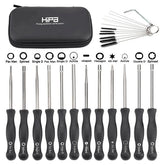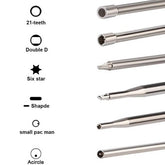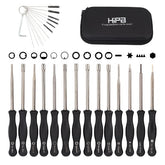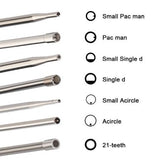Troubleshooting and Fixing Carburetor Fuel Leaks: A Step-by-Step Guide
If you're dealing with a carburetor that's dumping fuel everywhere, you're in for a frustrating and potentially dangerous situation. But don't worry, we're here to help you understand the inner workings of your carburetor and how to resolve this common issue. In this guide, we'll focus on the role of the float and needle valve, why your carburetor might be leaking, and step-by-step instructions to fix it.

Understanding the Float:
The key to understanding how carburetors work and why they might leak fuel lies in the float mechanism. The float is like a buoy in a carburetor's fuel bowl. As fuel is used, the float and fuel bowl level drop. When the float drops, it signals the needle valve to open, allowing fuel to enter the bowl. As the fuel level rises, the float rises with it, closing the needle valve when the fuel reaches the desired level.

Why Does It Leak?
Carburetor fuel leaks often occur because the float valve fails to shut off fuel flow. Typically, this happens when the fuel tank is positioned higher than the carburetor, causing excess fuel to overflow into the intake. The float should automatically cut off fuel when the bowl is full, but if it doesn't, you'll need to take action.

Resolving the Issue:
Now, let's get to the practical part: fixing the carburetor leak. Follow these steps to get your engine running smoothly again:
Inspect the Needle Valve:
Turn the carburetor upside down.
Remove the pin holding the float in place and take out the float.

Observe the needle valve inside the hole, which goes up and down with the float.
Clean the Needle Valve:
Often, gunk and debris can accumulate in this area, compromising the valve's seal.
Use a carburetor cleaning tool kit, such as the Hipa carburetor cleaning tool kit, to clean the valve thoroughly.
Ensure the needle valve moves freely up and down in its hole.
Check for O-Ring Damage:
Sometimes, a damaged O-ring can also lead to fuel leakage.
Inspect the O-ring for cracks or wear. If you find any issues, replace it with a new one.
Reassemble the Float:
Carefully place the float back into the carburetor with the needle valve in its designated hole.
Reinsert the pin, ensuring it aligns with the holes.
A carburetor leaking fuel can be a headache, but understanding its inner workings and following these steps can help you resolve the issue. By cleaning the needle valve, checking the O-ring, and ensuring proper assembly, you'll prevent excessive fuel from entering the intake and get your engine running smoothly once more. Regular maintenance is key to keeping your carburetor in top shape and avoiding future fuel-related problems.























1 comment